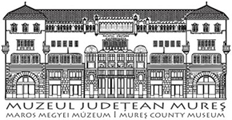Marisia - Maros Megyei Múzeum Évkönyve 30/1. (2010)
Articles
A New Brick Kiln Discovered in the Roman Settlement from Cristepi 89 On account of the significant quantities of building materials discovered in time, we can conclude beyond any doubt that there functioned a brickyard where they produced the necessary construction materials for the camp and the vicus.7 This kiln is placed outside the area of the settlement, on a hill located about 1 km away from the southern limit of the settlement. Interesting is that although the whole surrounding area was levelled, no other kilns were found, or other auxiliary equipment necessary to produce ceramics, such as pits and the waste materials. This singular occurrence is a rarity in the Roman world, especially since the kiln was build for long time operation. Technically, the installation which is the subject of this study corresponds in the typology proposed by Fran^oise Le Ny to type IIE8 of rectangular shaped kilns, with the observation that in our case the dimensions are slightly smaller. This type is met in Roman Dacia at Ulpia Traiana Sarmizegetusa9 and Micia10 11 or in Dobrouja at Garvän.11 The appearance of stamped bricks certified once more that there used to be a roman camp at Cristesti, still not located. No specific dating material was found so precise dating could not be established, but the discovery can undoubtedly be correlated with the Roman habitation level from the area, from the 2nd-3rd centuries AD. It must nevertheless be linked also with the presence of Ala I Bosporanorum in the vicinity, owed to the presence of the military stamps, but further details will be provided by future archaeological research in the area. Alicu 1984 Ardevan 2001 Benea1976 Benea1982 Berciu 1949 Cätinas 1980 Duhamel 1975 Ferenczi 1928 Filimon 1940 Floca 1937 BIBLIOGRAPHY Alicu, D., Douä cuptoare de ars tigle si cärämizi de la Ulpia Traiana Sarmizegetusa, ActaMN, XXI, 467-470. Ardevan, R., Cuptoare romane de la Napoca, IN: Studia archaeologica et historica Nicolao Gudea dicata. Omagiu Profesorului Nicolae Gudea la 60 de ani, Zaläu, 319-329. Benea D„ Oficina militarä de la Dierna (sec. Ill—IV), ActaMN, XIII, 205- 214. Benea, D., Ateliere ceramice de la Tibiscum. Contributii la istoria atelierelor de ceramicä din SV Daciei, Potaissa, III, 22-40. Berciu, I., Descoperiri arheologice la Apulum, Apulum, III, 1947-1949, 180-188. Cätinas, A., Ceramica romanä de la Potaissa-str. Cheii, Potaissa, II, 81-84. Duhamel, P., Les ateliers céramiques de la Gaule romaine, IN: Les dossiers de l’archéologie, Paris, 9, 12-20. Ferenczi Al., Dare de seamä asupra säpäturilor de la Cristesti, ACMIT, 1926-1928,216-217. Filimon, A., Cristesti (Sangidava), extract from RPAN, II-IV. Floca, O., Colectia arheologicä a Muzeului de Arheologie si Etnografie a Palatului Culturii din Tärgu-Mures, IN: Buletinul Muzeului Arheologie al Societätii de istorie, Arheologie si etnografie din Tärgu-Mures, nr. 1, Extras din Gazeta Ilustratä, nr. 6-7. 7 Petolescu-Märghitan 1974, 247-258; Benea 1976, 205-214; Moga 1976, 191-196. 8 Le Ny 1988, 41 and also fig. 20b and fig. 23 b/IIE. 9 Floca 1942, 430-440. 10 Floca et al. 1970, kiln nr. 1, 17-22. 11 Stefan 1957, 339-344.
